Distance in Turkish
Apologizing in Turkish
PRACTICAL IDEAS AND RESOURCES
Resources in this section curated by: Ayse Dilay Eroglu

Anvill Videos - UO ACCOUNT REQUIRED
#IamsayingSORRYinL2thinkingL1norms | Anvill Video (UO Account Required)
#ImnotsayingSorry | Anvill Video (UO Account Required)
#IsaySorrybut | Anvill Video (UO Account Required)
#IsaySorrybut #itispartlymyfault | Anvill Video (UO Account Required)
#Sayingsorryishumiliating | Anvill Video (UO Account Required)

Positive aspects of saying thank you instead of apologizing with cartoons | Article
This article gives information about how we can use Thank you instead of saying sorry to repair some situation. Advanced level students can read the article and examine each situation which were represented as comics. The article mainly concerns using different words and approaching situations to create a more positive atmosphere. This could be a good discussion topic.

I'm Sorry Sayings: 30 Impressive Apology Messages | Article
This article is about how to say sorry in Turkish and gives people some tips. It can be used as an observation activity for advanced level learners. They can analyse it via Subjectivity, Knowledge, Analysis, and Awareness, and extend it to different situations considering the solidarity.

AŞIRI ÖZÜR DİLEYEREK İNSANLARI DARLAMAK! | YouTube Video
This is a street prank video in which the guy apologizes to random people too many times and records the reactions of other people. I think this is an authentic material to teach cultural norms of apologies in Turkish community.

Role Play Situation Cards | Activity
Card 1: You have accidentally run over your neighbor’s cat with your car. The cat is injured and needs medical attention.
Card 2: You are in office hours with your professor and you spill your coffee all over their desk. Many of your professor’s papers have been stained by the coffee.
Card 3: You have forgotten your girlfriend/boyfriend’s birthday. Because of this, you don’t have a gift for them.
Card 4: Someone has bought donuts for the office. You eat the last donut without asking anyone if they would like it, and it turns out one of your co-workers wanted it
Card 5: You work at Starbucks, and one of your customers requests soy milk, because they are allergic to dairy. You serve them a coffee with regular milk, and they begin to drink it, and have an allergic reaction to it.
- Students work in groups and pick cards from the apology phrases pool. (Knowledge)
- They work on their apologies for different people with different social status. They prepare how they would use apology strategies (Analysis and Subjectivity)
- Students present their work in front of the classroom and the classmates give feedback on their work.(Analysis and Awareness)
ACADEMIC RESOURCES ON APOLOGIZING IN TURKISH
Resources in this section curated by: Ayse Dilay Eroglu
Aydin. (2013). Cross Cultural Pragmatics: A Study of Apology Speech Acts by Turkish speakers, American English Speakers and Advance Nonnative Speakers of English in Turkey [Master’s thesis, Minnesota State University, Mankato]. Cornerstone: A Collection of Scholarly and Creative Works for Minnesota State University, Mankato. https://cornerstone.lib.mnsu.edu/etds/269/
The study aims to identify and compare apology strategies used in Turkish, American English, and advanced non-native speakers of English in Turkey.
Results of the study revealed that advanced nonnative speakers showed similarities in their apologies in terms of general strategies, although in their modification of strategies they showed usage of L1 forms.
The data revealed that Turkish participants are more indirect in their apologies than the Americans. Also, the relationship between the offender and the offended has a high effect on the way of apologizing. Even if the advanced learners get closer to the target cultural norms, they are still affected by the native culture.
One of the most important findings the study revealed can be the fact that intensifiers of the apologies are generally not applied by the nonnative speakers, even if the NNSE participants able to apply target cultural norms in terms of general strategies.
It was inferred from the results that Turkish participants are less apologetic when the offended person is a close friend. It can be because of the close friendship and strong personal relationship or the community based nature of the Turkish language.
Canli Z., & Canli, B. (2013). Keep Calm and Say Sorry! The Use of Apologies by EFL Teachers in Turkish and English. Education Process: International Journal, 2(1-2), 36–46. https://doi.org/10.12973/edupij.2013.212.3
In this study, it was found out that non-native speakers are indirect in their apologies. Although nonnative speakers reached a high proficiency level of the target language, they tended to use L1 strategies in a number of cases. This can be claimed by L1 effect in view of the fact that they improved their own interlanguage usage. Since even advanced non-native speakers of English are not able to use L2 pragmatic competence to an advanced level, there is a need for them to improve pragmatic competence in L2. Therefore, the decision makers need to consider this gap in teaching ESL.
Cubukcu. (2018). An Interlanguage Pragmatic Study Of Politeness Strategies In Turkish And English. Strani Jezici, 46(4), 49–.
The study found out that when apologizing in English the participants used Im sorry more frequently whereas in Turkish for most cases it was Pardon a very informal way of apologizing showing lack of interest for friends and family members in the mother tongue. Two participants even denied that they broke the item. When apologizing for being late, the participants preferred to apologize without giving any explanations for their being late and even played on the fact that they were late by adding “it is not late is it?”
Tabatabaei. (2018). A Comparative Analysis of the Apology Strategy between Turkish EFL Learners and English Native Speakers. Applied Linguistics Research Journal (Online), 2(3), 48–57. https://doi.org/10.14744/alrj.2018.33042
The study revealed that there are some differences between the two groups in the content of apology expressions, the place of IFID and degree of directness. This study did not use the DCT in a written form, but in oral form.
The researchers found some similar results in accordance with previous research studies. Similar to what they observed, Istifçi (2009) found that when they use a repair strategy while apologizing, native participants use broader covering for the damage while non-native participants generally cover a part of the damage. On the other hand, some differences were indicated by the researchers. For example, in this study, researchers found that while giving explanations, non-native participants were more detailed, whereas native participants gave more general and superficial information. However, Aydın (2013) found that non-native participants were more nonspecific in their explanations. Another contrast with the study of Aydın (2013) is that, in his study, native participants used more intensifiers than nonnative speakers. However, in this study non-native speakers used more intensifiers along with the phrase “I’m sorry.”, while native speakers preferred not using intensifiers but using “I apologize” to strengthen the meaning.
It was suggested by the researchers that syllabus designers and material developers make a list of apology situations and the strategies used by English native speakers in order to help learners to avoid negative transfer from L1 into L2.
